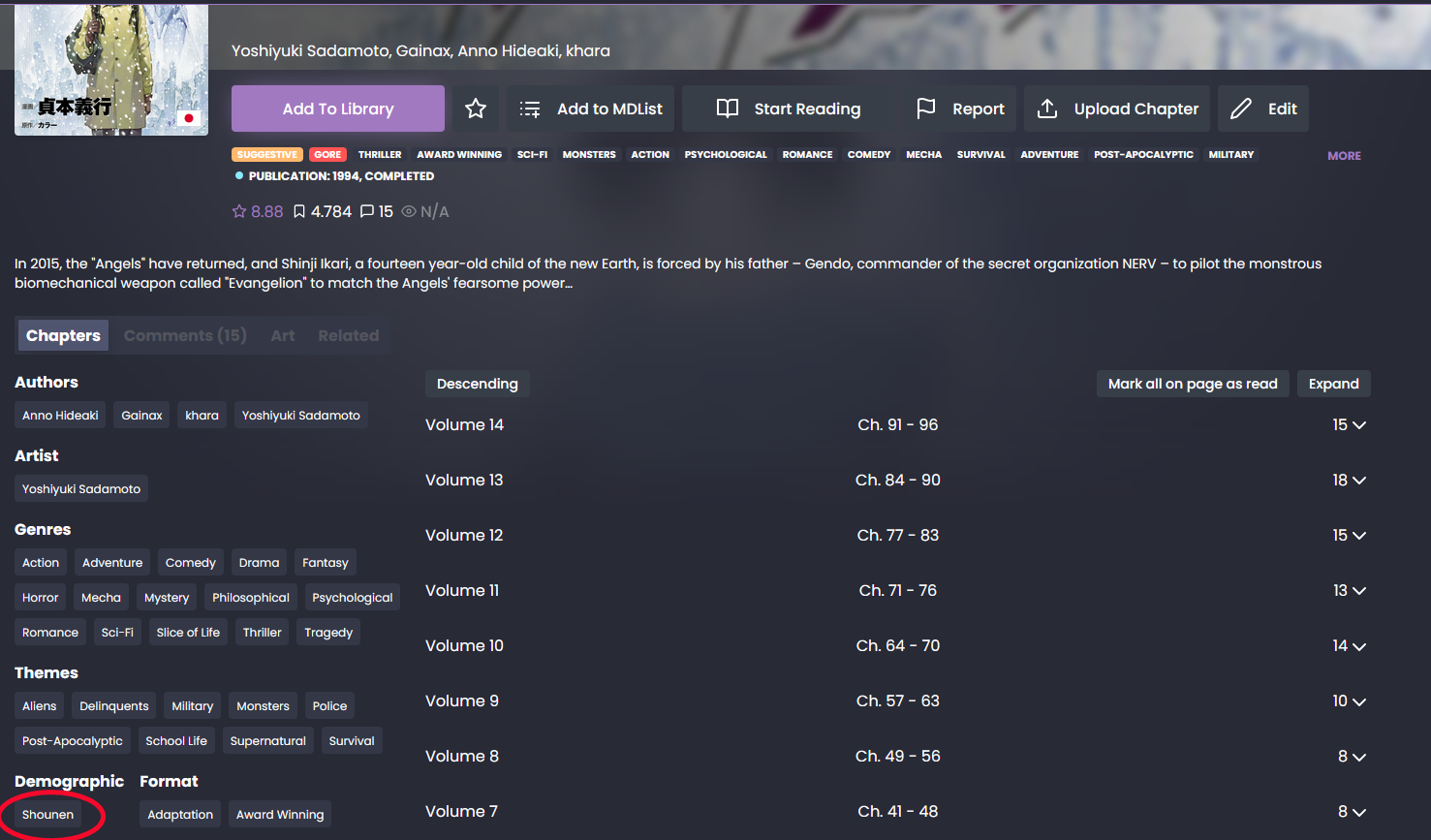Power Uploader
- Joined
- Jul 27, 2018
- Messages
- 13
Just as title says, there are a certain amount of series that for A or B reason have moved from one magazine to another, sometimes this only makes them change their publication period from weekly to monthly, but there are also cases where when changing magazine they change their demographics, which consequently makes them change their tone and contents so...

E.g.:
Since we don't have in mangadex a magazine tracking system or how to identify if they went through this transition, how do we decide which demographic should predominate?
the one that was decided upon publication, the one that changed and finished with the work, or the demographic that was in the longest time while the work was being published?

E.g.:
- Neon Genesys Evangelion, in mangadex is listed as "shounen" but actually it should be Seinen. Originally serialized in Shonen Ace (1994-2009) and Young Ace (2009-2013).
- Jojo's Steel Ball Run, which was originally published in Weekly Shounen Jump and transferred to Ultra Jump.
- Vinland Saga from Weekly Shounen Magazine to Afternoon
- Dorohedoro moved from Ikki to Hibana and finally to Gessan, which made it move from Seinen to Shounen.
Since we don't have in mangadex a magazine tracking system or how to identify if they went through this transition, how do we decide which demographic should predominate?
the one that was decided upon publication, the one that changed and finished with the work, or the demographic that was in the longest time while the work was being published?